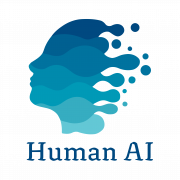Understanding Personality: OCEAN Model
“Who are you?”
It is a fairly simple question, but it is one of the most difficult to answer.
There are many ways to interpret this question. One answer might include name, profession, family role, hobbies, passions, or geographic or birthplace. A more complete answer might include a description of beliefs and values.
Each of us has a different answer to this question and each answer tells a story about who we are. While we may have much in common with our peers, such as country, culture, eye color… there is one thing that makes each of us unique: personality.
Throughout life we may meet many people, but no two will be exactly alike. How do we categorize and classify something as varied and unique as personality?
OCEAN Model
The OCEAN/Big Five model (McRae & John 1992) is one of the most widespread personality inventories in modern psychology; it is a very valuable tool for understanding human personality.
It is currently the most widespread and widely accepted descriptive model in the international scientific community for assessing and structuring human personality and behavior. It has a wide variety of applications and is used in fields as diverse as education, work and therapy, and is linked to social-emotional competencies or soft-skills.
It is considered one of the most reliable and consistent personality models in psychological research, demonstrating high reliability and predictive validity in a wide variety of contexts, including the workplace, education and mental health.
The five factors
The Big 5 are the five traits or factors that explain and characterize the differences in both personality and decision making of the individual.
- Openness to experience: The willingness to experience new ideas, emotions and experiences.
- Responsibility: The ability to act in a conscious and committed manner.
- Extraversion: Sociability, activity, thrill-seeking, positivity and impulsiveness.
- Agreeableness: Willingness to cooperate and help others, as well as sensitivity to the needs of others.
- Neuroticism: Negative emotional experience and instability.
Each of these main traits is further described in 6 facets (personality is characterized by 30 facets). For example, the Kindness dimension is divided into Trust in Others, Openness, Altruism, Cooperation, Modesty and Empathy.
d
Applications of the model
The OCEAN model is used in a wide variety of applications, including:
- Education: Helping students to better understand their own learning style and develop more effective learning strategies, personalizing their educational path.
- Educational guidance: Helping students understand their preferences and aptitudes in order to perform better academically and make decisions about their future careers.
- Recruitment (HR): Helping companies identify candidates with the most suitable characteristics for a given position and being able to predict job performance.
- Desarrollo profesional: Ayudar a las personas a comprender sus puntos fuertes y sus áreas de mejora para desarrollar su potencial, sus habilidades interpersonales y su capacidad de liderazgo.
- Professional development: Helping people to understand their strengths and areas for improvement in order to develop their potential, interpersonal skills and leadership capabilities.
- Psychology and mental health: Therapists can use this model to assess patients’ personalities, detect certain psychological problems and adapt their therapeutic approaches accordingly.

Interrelation between factors
The five dimensions of the OCEAN model are independent of each other. Each dimension of the model can be studied separately, but it is interesting to analyze how they relate to each other.
It is important to remember that the OCEAN model is not a measure of “good or bad,” but simply a way of describing different aspects of human personality. The dimensions are not mutually exclusive, and a person may have different levels in different areas of his or her life or at different times. This means that a person may be high on one dimension and low on another. For example, a person may be high in responsibility but low in extraversion or agreeableness, or a person may be extroverted and responsible, or introverted and creative.
Studying the interaction between the dimensions of the OCEAN model can yield much information about how individual differences manifest themselves in human behavior.
Profile examples
Some examples of personality profiles according to the OCEAN model:
- High in extraversion and low in responsibility: Enjoys socializing and entertaining, but may have difficulty fulfilling work or school responsibilities.
- High in extraversion and low in agreeableness: Outgoing and sociable, but may also be competitive and inconsiderate of others.
- High in neuroticism and low in agreeableness: Frequently experiences intense negative emotions and may have difficulty relating to others effectively.
- High in neuroticism and low in responsibility: Experiences frequent negative emotions and may have difficulty meeting daily responsibilities.
Personality, psycholinguistics & AI
The latest advances in psycholinguistics make it possible to predict personality from textual information using the novel open vocabulary approach. Together with the speed and accuracy of artificial intelligence analysis, Human AI provides accurate and immediate personality assessments and reports.
Personality assessments provide the 5 traits of the OCEAN model, as well as the facets of each trait, in an immediate, accurate, user-friendly and easy-to-use individual report. Group reports are also available, and we can develop custom reports upon request.
If you want to get an immediate, accurate and easy to use individual report, take the test and request the demo! 👉🏼 tu-demo.humanaitech.com











